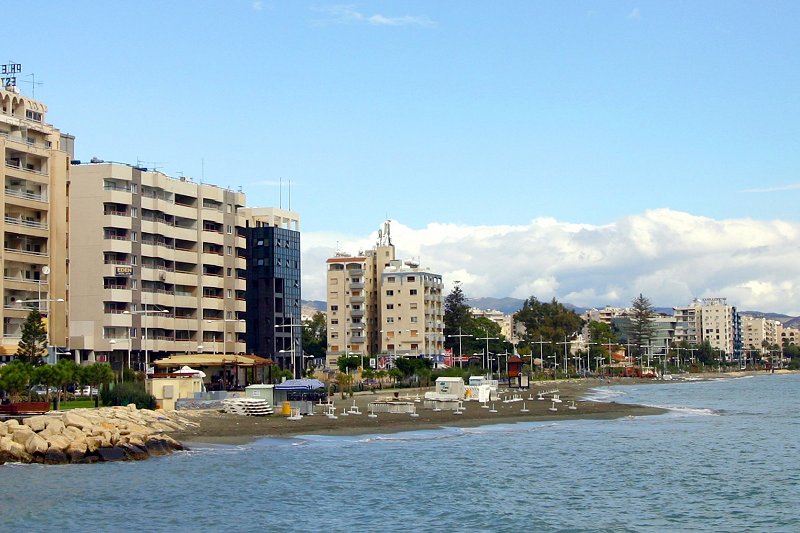 View of the seaside in Limassol, Cyprus
View of the seaside in Limassol, CyprusSource: https://commons.wikimedia.org/wiki/File:Limassol,_Cyprus_2.jpg
Author: Leonid Mamchenkov

Author: Leonid Mamchenkov

Limassol (Greek: Λεμεσός, Turkish: Limasol) is the second most populous city in Cyprus and the largest in terms of size. It has a population of 228,000 people (2011 estimate). The city is located on the southernmost part of the island. It is also the biggest Cypriot port and a major tourist destination.
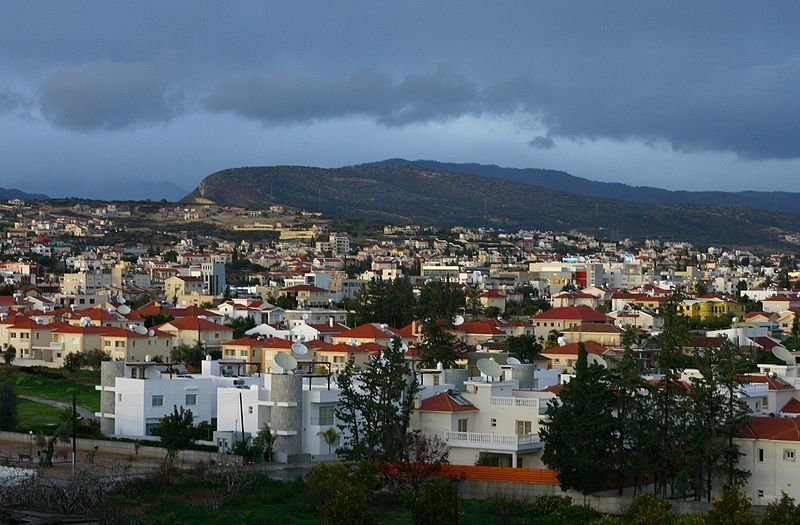 Limassol, Cyprus
Limassol, CyprusSource: https://commons.wikimedia.org/wiki/File:Rainy_Limassol.jpg
Author: Leonid Mamchenkov

Author: Leonid Mamchenkov

Limassol experiences a Mediterranean climate with hot, dry summers and cool, wet winters. The hottest month is August, when the average high temperature rises to 33.3°C (91.9°F). Coldest month is February, when the average low temperature drops to 8.5°C (47.3°F). December is the wettest month, receiving 99.7 mm (3.925 in) of rainfall.
The tourism industry of Limassol was the direct result of Turkish invasion which captured the main tourist resorts of Cyprus, then at Famagusta and Kyrenia. This enabled attention to be redirected to Limassol, which has excellent beaches.
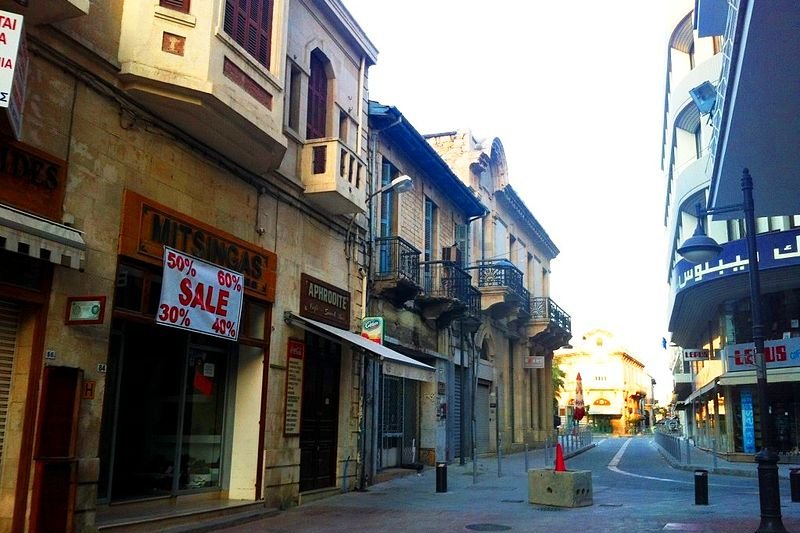 The old town of Limassol, Cyprus
The old town of Limassol, CyprusSource: https://commons.wikimedia.org/wiki/File:Limassol_Old_Town.jpg
Author: Tech bro

Author: Tech bro

Limassol traces its history to 2,000 BC, based on ancient graves found in the area. The city is located between two ancient settlements, Amathus and Kourion. An early mention of Limassol occurred in the 12th century, when the fiancée and sister of King Richard the Lion Heart found themselves in the city because of a storm. The local governor invited the two queens ashore, with the intention of holding them as ransom, but they wisely refused to come ashore.
After the British took over Cyprus in 1878, Limassol benefited from the attention paid to it by the British governor, resulting in improvement to the road and town condition. Electricity was introduced to the city in 1912. The cultural life of Limassol bears the influence of British colonial rule, which is reflected in its art galleries, music halls and football clubs today.
Visiting Limassol
Limassol does not have its own airport. You can land at either the Larnaca or Paphos International Airports. Both are about 70 km from Limassol. Take a bus from either cities to get there.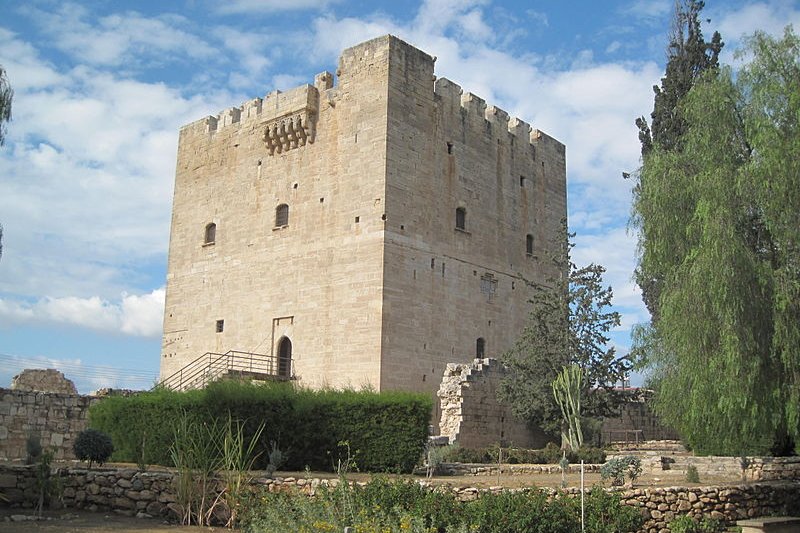 Kolossi Castle, Limassol
Kolossi Castle, LimassolSource: https://commons.wikimedia.org/wiki/File:Cyprus_-_Kolossi_castle_13.JPG
Author: Dickelbers

Author: Dickelbers

Places of Interest in Limassol
- Agia Napa Cathedral
Built in the early 20th century, this huge Byzantine-style church is the cathedral of the Greek Orthodox community in Limassol. - Agios Andronikos Church
Church built in the 1870s in the Neo-Byzantine style. - Carob Museum
Museum occupying the renovated mill near Limassol Castle. It provides a glimpse into the harvesting of carob and its usage in the making of various items from honey to photographic filmplates. - Central Market
Housed in an arcaded building from the early 20th century, the market provides a glimpse into the daily life in Cyprus, with bountiful displays of fruits and vegetables. - Cyprus Handicraft Center
A place to admire and purchase local handicrafts that include lace, jewelry, ceramics, woodcarvings and more. - Grand Mosque (Cami Kebir)
Mosque of the once sizable Turkish community of Limassol, now still used by a handful of ethnic Turkish residents. The mosque is sandwiched between the buildings behind the Turkish bazaar. - Limassol Castle
The most important historic sight in Limassol. It was built by Lusignan princes over the site of a former Byzantine form. Subsequent rulers, among them the Venetians, Ottomans and British, further fortified it. - Seaside Promenade
A palm-fringed esplanade stretching some 3 km along the coast, the perfect place for evening strolls. - Town Hall
Located on a narrow street near the Agia Napa Cathedral and the post office, the Town Hall was designed by a German architect based on the ancient Greek style.
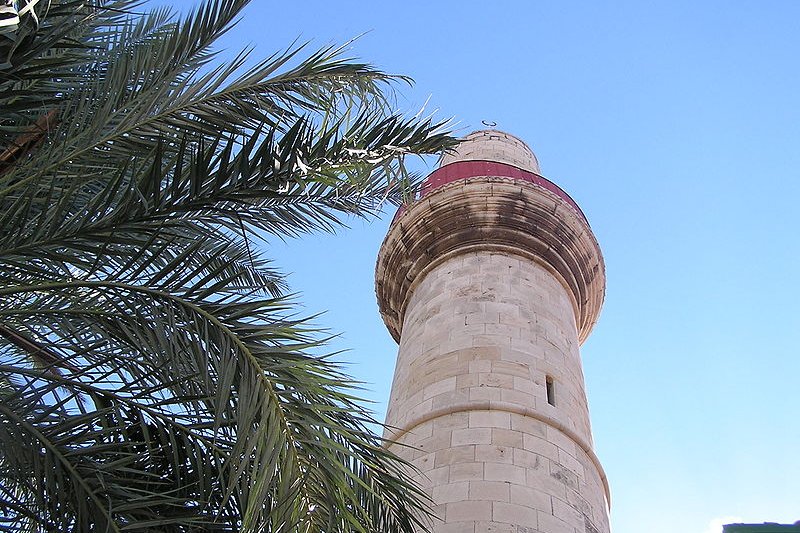 Minaret of a mosque in Limassol
Minaret of a mosque in LimassolSource: https://commons.wikimedia.org/wiki/File:Mosques_in_Limassol3.JPG
Author: Olaf

Author: Olaf

Sights & Attractions around Limassol
- Beaches of Limasol
The best beaches of Limassol are located outside the city center, beyond the new harbor. - District Archaeological Museum
Museum showcasing ancient artifacts from the nearby ancient city-states of Kourion and Amathous. - Fasouri Water Mania Waterpark
A water theme park with water slides, swimming pools and artificial waves, a great place to spend the day with children. - Folk Art Museum
Museum with six rooms exhibiting artifacts related to Cypriot folk art. Among the items on display include traditional costumes, kitchen tools, jewelry and others. - Municipal Art Gallery
Gallery showcasing the works of Cypriot artists. It was designed in 1930 by Benjamin Gunzburg, who also designed the Town Hall. - Municipal Gardens and Mini-Zoo
Public garden with a small zoo that holds a number of exotic animals including cheetahs and zebras. - New Pork
This is the largest port in Cyprus. It was expanded after the port of Famagusta was captured by Turkish forces. - Pattichion Theater
This is the oldest theater in Limassol. It still stages plays, dramas and other performances. - St Catherine's Catholic Church
Catholic church with a pair of towers. It was built in 1879 and stands opposite the beach near the end of the promenade. - Wineries
The largest wineries in Cyprus are located along the avenue between the Old Town and the new harbor of Limassol. These wineries are open to visitors and offer in-house tours.
 Latest updates on Penang Travel Tips
Latest updates on Penang Travel Tips
 Map of Roads in Penang
Map of Roads in Penang
Looking for information on Penang? Use this Map of Roads in Penang to zoom in on information about Penang, brought to you road by road.
Copyright © 2003-2025 Timothy Tye. All Rights Reserved.

 Go Back
Go Back